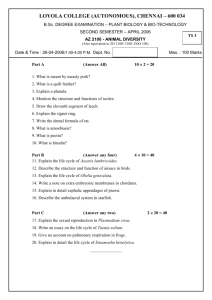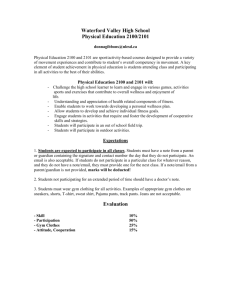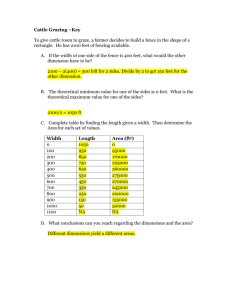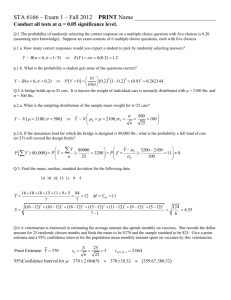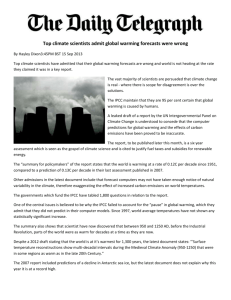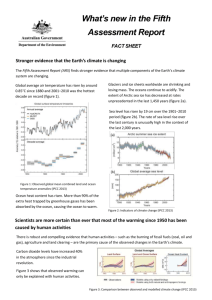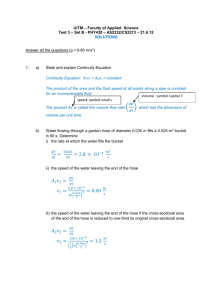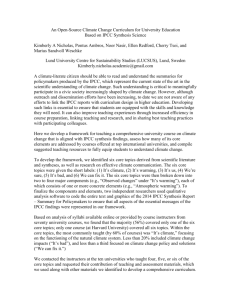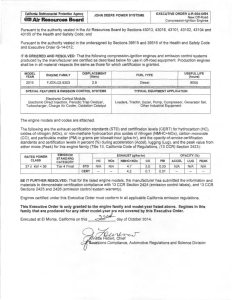Guidance on Sea Level 2100
advertisement
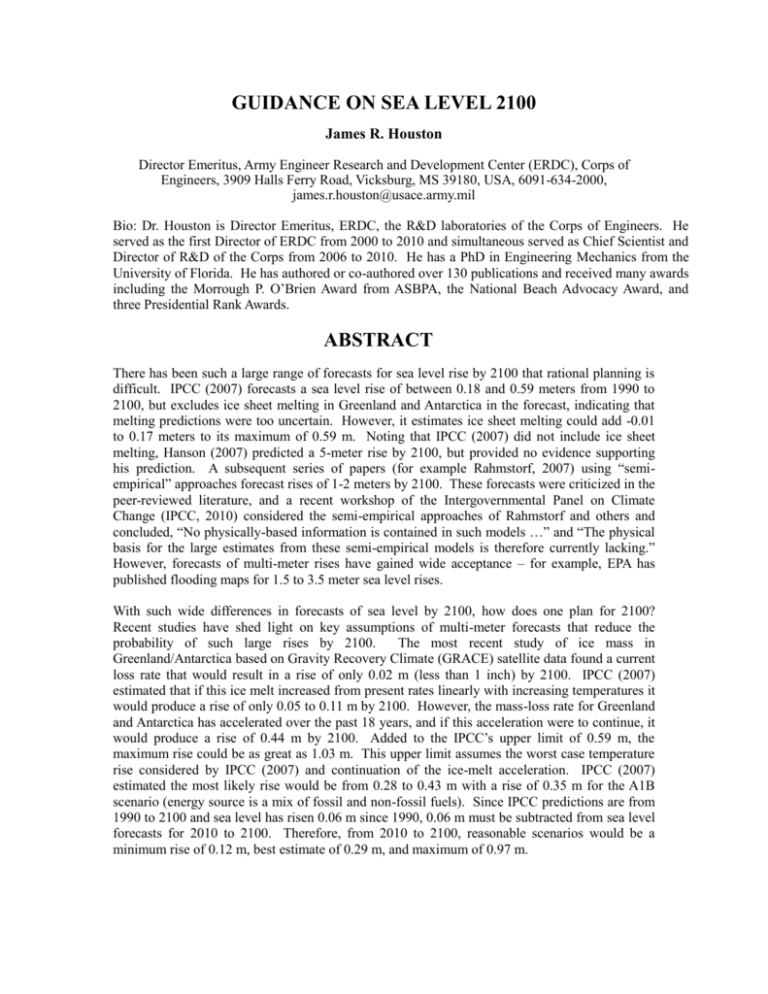
GUIDANCE ON SEA LEVEL 2100 James R. Houston Director Emeritus, Army Engineer Research and Development Center (ERDC), Corps of Engineers, 3909 Halls Ferry Road, Vicksburg, MS 39180, USA, 6091-634-2000, james.r.houston@usace.army.mil Bio: Dr. Houston is Director Emeritus, ERDC, the R&D laboratories of the Corps of Engineers. He served as the first Director of ERDC from 2000 to 2010 and simultaneous served as Chief Scientist and Director of R&D of the Corps from 2006 to 2010. He has a PhD in Engineering Mechanics from the University of Florida. He has authored or co-authored over 130 publications and received many awards including the Morrough P. O’Brien Award from ASBPA, the National Beach Advocacy Award, and three Presidential Rank Awards. ABSTRACT There has been such a large range of forecasts for sea level rise by 2100 that rational planning is difficult. IPCC (2007) forecasts a sea level rise of between 0.18 and 0.59 meters from 1990 to 2100, but excludes ice sheet melting in Greenland and Antarctica in the forecast, indicating that melting predictions were too uncertain. However, it estimates ice sheet melting could add -0.01 to 0.17 meters to its maximum of 0.59 m. Noting that IPCC (2007) did not include ice sheet melting, Hanson (2007) predicted a 5-meter rise by 2100, but provided no evidence supporting his prediction. A subsequent series of papers (for example Rahmstorf, 2007) using “semiempirical” approaches forecast rises of 1-2 meters by 2100. These forecasts were criticized in the peer-reviewed literature, and a recent workshop of the Intergovernmental Panel on Climate Change (IPCC, 2010) considered the semi-empirical approaches of Rahmstorf and others and concluded, “No physically-based information is contained in such models …” and “The physical basis for the large estimates from these semi-empirical models is therefore currently lacking.” However, forecasts of multi-meter rises have gained wide acceptance – for example, EPA has published flooding maps for 1.5 to 3.5 meter sea level rises. With such wide differences in forecasts of sea level by 2100, how does one plan for 2100? Recent studies have shed light on key assumptions of multi-meter forecasts that reduce the probability of such large rises by 2100. The most recent study of ice mass in Greenland/Antarctica based on Gravity Recovery Climate (GRACE) satellite data found a current loss rate that would result in a rise of only 0.02 m (less than 1 inch) by 2100. IPCC (2007) estimated that if this ice melt increased from present rates linearly with increasing temperatures it would produce a rise of only 0.05 to 0.11 m by 2100. However, the mass-loss rate for Greenland and Antarctica has accelerated over the past 18 years, and if this acceleration were to continue, it would produce a rise of 0.44 m by 2100. Added to the IPCC’s upper limit of 0.59 m, the maximum rise could be as great as 1.03 m. This upper limit assumes the worst case temperature rise considered by IPCC (2007) and continuation of the ice-melt acceleration. IPCC (2007) estimated the most likely rise would be from 0.28 to 0.43 m with a rise of 0.35 m for the A1B scenario (energy source is a mix of fossil and non-fossil fuels). Since IPCC predictions are from 1990 to 2100 and sea level has risen 0.06 m since 1990, 0.06 m must be subtracted from sea level forecasts for 2010 to 2100. Therefore, from 2010 to 2100, reasonable scenarios would be a minimum rise of 0.12 m, best estimate of 0.29 m, and maximum of 0.97 m.
